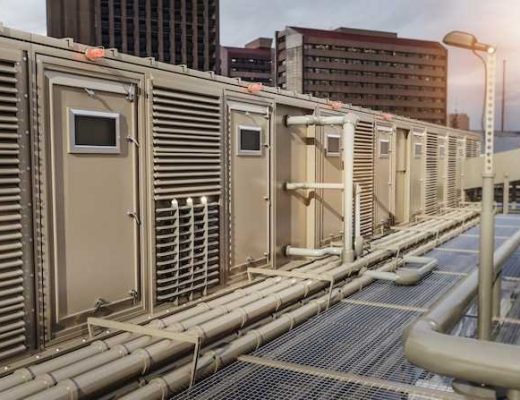
As organizations strive to create a conducive and healthy work environment, the significance of maintaining optimal indoor air quality cannot be overstated. The air we breathe within commercial spaces plays a pivotal role in the overall well-being and productivity of employees. In recent years, there has been a growing awareness regarding the detrimental effects of poor air quality on human health, leading businesses to seek effective measures to address this concern.
Creating a Breathable Atmosphere: Ensuring clean and fresh air circulation is a fundamental aspect of enhancing indoor air quality. By implementing innovative ventilation systems, businesses can effectively remove pollutants and allergens, creating a breathable atmosphere for employees and visitors alike. The strategic placement of air filters and regular maintenance of HVAC systems are essential in preventing the accumulation of harmful particles.
Embracing Natural Elements: Incorporating natural elements within commercial spaces not only adds aesthetic appeal but also contributes to improved air quality. Indoor plants act as natural air purifiers, absorbing toxins and releasing oxygen. By strategically placing greenery throughout the workspace, businesses can create a healthier and more vibrant environment. Additionally, utilizing natural materials such as wood and stone in construction and furnishings can minimize the release of volatile organic compounds (VOCs) that often contribute to poor air quality.
Understanding the Importance of Indoor Air Quality
In today’s modern world, the significance of maintaining a healthy and clean environment within commercial spaces cannot be overstated. The quality of the air we breathe indoors has a direct impact on our overall well-being and productivity. It is crucial to comprehend the importance of indoor air quality and its implications for the occupants of these spaces.
The significance of indoor air quality lies in its ability to affect the health and comfort of individuals who spend a significant amount of time in commercial spaces. Poor indoor air quality can lead to various health issues, including respiratory problems, allergies, and fatigue. Additionally, it can also impact cognitive function and concentration, ultimately affecting productivity and performance.
Furthermore, understanding the importance of indoor air quality is essential for creating a safe and welcoming environment for employees, customers, and visitors. By prioritizing and improving indoor air quality, businesses can demonstrate their commitment to the well-being of their stakeholders and enhance their reputation as responsible and caring organizations.
Moreover, recognizing the significance of indoor air quality allows businesses to comply with regulatory standards and guidelines. Many countries have established regulations and requirements to ensure that commercial spaces maintain a certain level of air quality. By understanding these standards, businesses can take proactive measures to meet and exceed them, ensuring the health and safety of everyone within their premises.
In conclusion, comprehending the importance of indoor air quality is crucial for businesses operating in commercial spaces. It directly impacts the health, comfort, and productivity of individuals, while also contributing to the overall reputation and compliance of the organization. By prioritizing and improving indoor air quality, businesses can create a healthier and more conducive environment for all stakeholders involved.
Identifying Common Indoor Air Pollutants
In order to improve the quality of air in commercial spaces, it is important to first identify the common pollutants that can be found indoors. These pollutants can have a negative impact on the health and well-being of individuals who occupy these spaces. By understanding and recognizing these pollutants, effective measures can be taken to mitigate their presence and improve indoor air quality.
A variety of substances can contribute to indoor air pollution, including but not limited to:
| Pollutant | Description |
|---|---|
| Volatile Organic Compounds (VOCs) | Chemicals emitted from various sources such as paints, cleaning products, and furniture that can cause respiratory irritation and other health issues. |
| Particulate Matter | Tiny particles suspended in the air, including dust, pollen, and mold spores, which can trigger allergies and respiratory problems. |
| Carbon Monoxide (CO) | A colorless and odorless gas produced by the incomplete combustion of fuels, such as gas stoves and heaters, which can be deadly in high concentrations. |
| Formaldehyde | A chemical found in building materials, furniture, and household products that can cause irritation of the eyes, nose, and throat, as well as respiratory issues. |
| Radon | A naturally occurring radioactive gas that can seep into buildings from the ground, potentially leading to lung cancer if high levels are present. |
| Biological Contaminants | Microorganisms such as bacteria, viruses, and mold that can thrive in damp environments and cause respiratory infections and allergic reactions. |
By being aware of these common indoor air pollutants, building owners and occupants can take proactive steps to reduce their presence and create a healthier indoor environment. Regular monitoring, proper ventilation, and the use of air purifiers or filtration systems can all contribute to improving indoor air quality and promoting the well-being of individuals in commercial spaces.
Implementing Proper Ventilation Systems
Creating a healthy and comfortable indoor environment in commercial spaces requires the implementation of proper ventilation systems. Adequate ventilation plays a crucial role in maintaining good air quality and promoting the well-being of occupants. In this section, we will explore the importance of implementing effective ventilation systems and discuss various strategies to achieve optimal indoor air quality.
One of the key benefits of implementing proper ventilation systems is the removal of indoor air pollutants. These pollutants can include volatile organic compounds (VOCs), particulate matter, and various allergens. By ensuring a constant supply of fresh air and proper circulation, ventilation systems help to dilute and remove these harmful substances, reducing the risk of health issues and improving overall air quality.
Another important aspect of proper ventilation is controlling humidity levels. Excessive moisture in the air can lead to the growth of mold and mildew, which not only affects air quality but also poses health risks. Ventilation systems equipped with humidity control features can effectively regulate moisture levels, preventing the accumulation of mold and maintaining a comfortable environment for occupants.
In addition to removing pollutants and controlling humidity, proper ventilation systems also contribute to thermal comfort. By providing a steady flow of fresh air, these systems help to regulate temperature and reduce the feeling of stuffiness. This creates a more pleasant and productive working environment, enhancing the overall comfort and well-being of individuals in commercial spaces.
Implementing proper ventilation systems involves considering various factors such as the size and layout of the space, the number of occupants, and the specific ventilation requirements. It is essential to consult with professionals in the field to determine the most suitable system for each commercial space. Regular maintenance and monitoring of ventilation systems are also crucial to ensure their continued effectiveness in improving indoor air quality.
- Ensure a constant supply of fresh air
- Control humidity levels to prevent mold growth
- Regulate temperature for thermal comfort
- Consider specific ventilation requirements for each commercial space
- Maintain and monitor ventilation systems regularly
By implementing proper ventilation systems, commercial spaces can create a healthier and more comfortable environment for occupants, improving indoor air quality and promoting overall well-being.
Regular Maintenance and Cleaning Practices

In order to maintain a healthy and comfortable environment in commercial spaces, it is essential to implement regular maintenance and cleaning practices. These practices play a crucial role in ensuring the quality of indoor air and promoting the well-being of occupants.
One important aspect of regular maintenance is the proper upkeep of ventilation systems. Regular inspection and cleaning of air ducts, filters, and vents help prevent the accumulation of dust, allergens, and other pollutants. This not only improves the air quality but also enhances the efficiency of the HVAC system, leading to energy savings.
Additionally, routine cleaning of surfaces and furnishings is vital in reducing the presence of contaminants. Dusting, vacuuming, and mopping should be performed regularly to remove dirt, dust mites, and other allergens. Paying attention to commonly overlooked areas such as blinds, curtains, and upholstery can significantly contribute to maintaining a clean and healthy indoor environment.
Furthermore, the use of environmentally friendly cleaning products is recommended to minimize the introduction of harmful chemicals into the air. Opting for natural or non-toxic cleaners can help reduce the risk of respiratory irritation and allergic reactions among occupants.
Regular maintenance and cleaning practices should also include the inspection and maintenance of building materials and furnishings. Identifying and addressing any issues such as water leaks, mold growth, or deteriorating materials is crucial in preventing the release of harmful substances into the air.
In conclusion, regular maintenance and cleaning practices are essential for improving indoor air quality in commercial spaces. By implementing these practices, businesses can create a healthier and more comfortable environment for their employees and visitors, promoting overall well-being and productivity.
Using Air Purification Technologies
In this section, we will explore the utilization of air purification technologies to enhance the quality of air in commercial environments. By employing advanced air purification systems, businesses can create a healthier and more comfortable indoor atmosphere for their employees and customers.
One of the key benefits of incorporating air purification technologies is the removal of harmful pollutants and contaminants from the air. These technologies employ various methods such as filtration, ionization, and UV sterilization to eliminate allergens, dust, bacteria, and viruses. By effectively capturing and neutralizing these pollutants, air purification systems contribute to a cleaner and safer environment.
Furthermore, air purification technologies can help mitigate the presence of unpleasant odors in commercial spaces. Whether it’s the lingering smell of food in a restaurant or the musty odor in a gym, these systems can effectively eliminate odorous particles and improve the overall air freshness. This not only enhances the comfort of occupants but also leaves a positive impression on customers.
Another advantage of utilizing air purification technologies is the potential reduction in respiratory issues and allergies among individuals. By removing airborne particles that can trigger respiratory problems, these systems can create a healthier environment for individuals with asthma, allergies, or other respiratory conditions. This can lead to improved productivity and well-being among employees, ultimately benefiting the business.
It is worth noting that the selection of the appropriate air purification technology depends on the specific needs and characteristics of the commercial space. Factors such as the size of the area, the level of pollutants, and the desired air quality goals should be considered when choosing the most suitable system. Consulting with experts in the field can help businesses make informed decisions and maximize the effectiveness of their air purification strategies.
| Advantages of Using Air Purification Technologies: |
|---|
| – Removal of harmful pollutants and contaminants |
| – Elimination of unpleasant odors |
| – Reduction in respiratory issues and allergies |
| – Customization based on specific needs |
Educating and Engaging Employees in Practices to Enhance Indoor Air Quality

Creating a healthy and comfortable indoor environment is crucial for the well-being and productivity of employees in commercial spaces. In order to achieve this, it is essential to educate and engage employees in practices that promote and maintain good indoor air quality. By fostering awareness and providing necessary knowledge, employees can actively contribute to creating a healthier workplace.
Building Awareness:
One of the first steps in educating employees about indoor air quality practices is to build awareness regarding the importance of clean and fresh air. By emphasizing the impact of indoor air quality on health, comfort, and overall well-being, employees can understand the significance of their role in maintaining a healthy workplace environment.
Providing Knowledge:
Equipping employees with the necessary knowledge about indoor air quality practices is essential for them to make informed decisions and take appropriate actions. This includes educating them about potential sources of indoor air pollution, such as volatile organic compounds (VOCs), dust, and allergens, and how these can be minimized or eliminated. Additionally, providing information on proper ventilation techniques, air filtration systems, and regular maintenance practices can empower employees to actively contribute to improving indoor air quality.
Encouraging Engagement:
Engaging employees in indoor air quality practices involves encouraging their active participation and involvement. This can be achieved through regular communication channels, such as meetings, newsletters, or email updates, where employees are informed about ongoing initiatives, best practices, and any changes or improvements being made. Additionally, creating a platform for employees to share their concerns, suggestions, or experiences related to indoor air quality can foster a sense of ownership and collective responsibility.
Empowering Employees:
Empowering employees to take individual actions to improve indoor air quality is crucial for the success of any initiative. This can be done by providing them with the necessary tools and resources, such as guidelines for proper ventilation, tips for reducing indoor air pollutants, or access to air quality monitoring devices. By empowering employees with the knowledge and means to make a positive impact, they can actively contribute to creating a healthier and more productive work environment.
Continual Education and Evaluation:
Lastly, it is important to establish a culture of continual education and evaluation regarding indoor air quality practices. This involves regularly updating employees on new developments, research findings, or emerging technologies in the field. Additionally, periodically evaluating the effectiveness of implemented practices and seeking feedback from employees can help identify areas for improvement and ensure that the strategies in place are achieving the desired outcomes.
By educating and engaging employees in indoor air quality practices, commercial spaces can create a healthier and more productive environment for their workforce. Through building awareness, providing knowledge, encouraging engagement, empowering employees, and fostering a culture of continual education and evaluation, the goal of improving indoor air quality can be effectively achieved.



